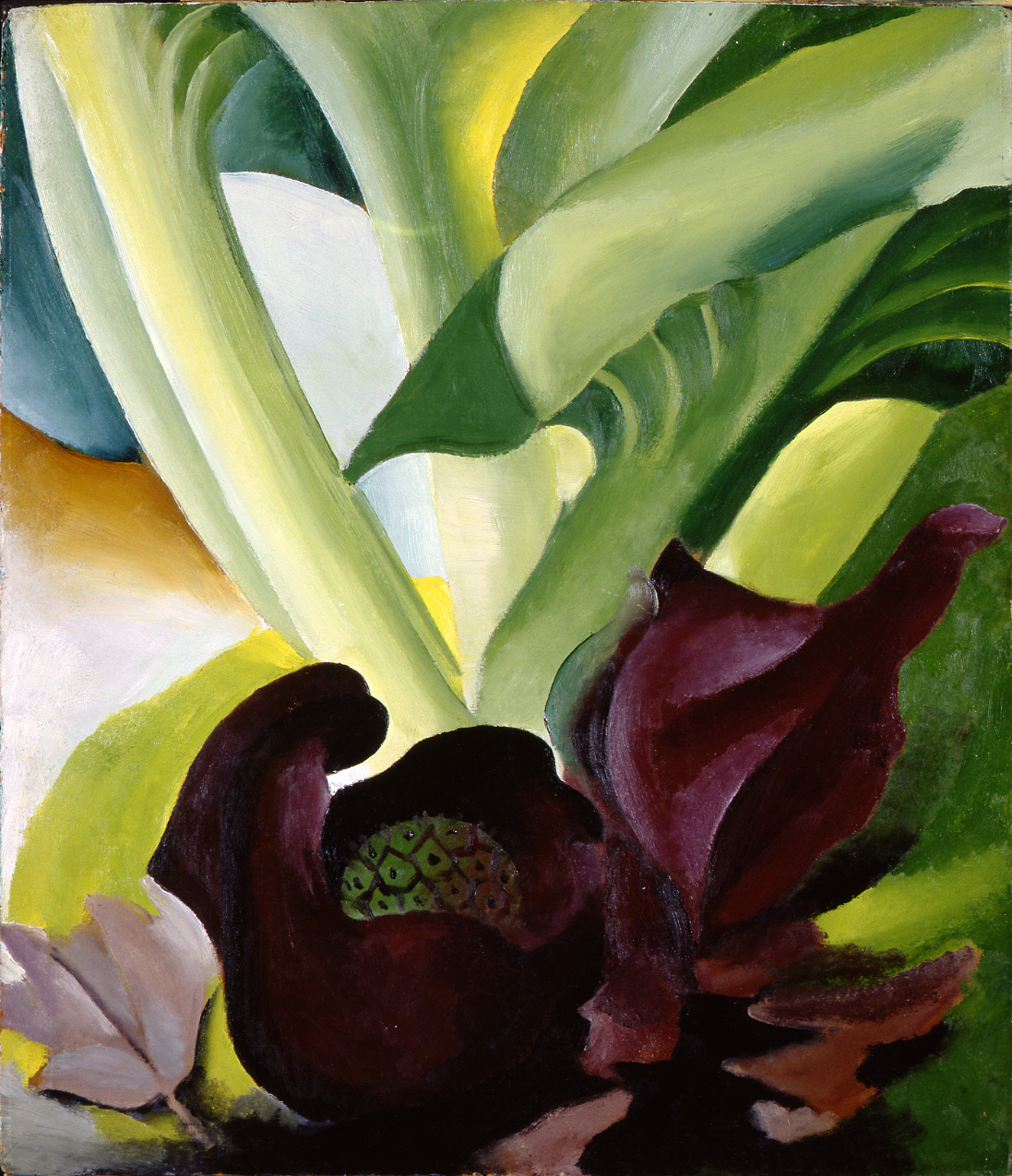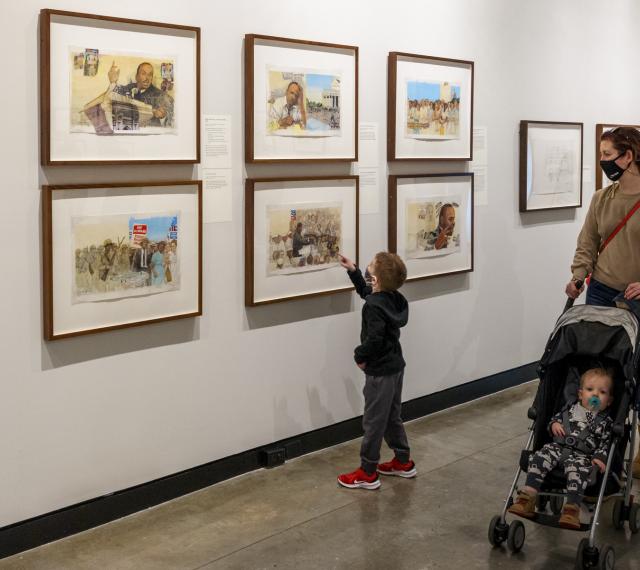In the painting Skunk Cabbage from the 1920s, Georgia O’Keeffe created an immersive experience of nature through the simple combination of thick green lines, yellow accent highlights, and maroon circles and semi-circles. Here, the artist’s juxtaposition of the bright, jutting green leaves of the cabbage with the dark purple heart of the plant is visually stimulating in both form and color.
The plant is depicted from a viewpoint low to the ground, so that the viewer feels dwarfed by the vegetation – surrounded and unable to glimpse the horizon beyond. When looking at Skunk Cabbage, one must ask, what is O’Keeffe trying to make us see through this closely cropped view? Is the actual plant symbolic, or is the painting reflective of her unique worldview?
By removing depth and dimension from this work, O’Keeffe created a flattened, stylized vision of a plant. Critics describe this style of painting as a “formal approach” when the composition and other literal aspects of the artwork take prominence. This technique immerses the viewer in nature, as the colorful forms are pushed up against the picture plane.
By visually manipulating this view, in Skunk Cabbage, O’Keeffe is able to communicate the symbolic importance of nature by recreating the visceral experience of being outdoors. As she wrote in 1926, it was “school and things that painters have taught me” that “keep me from painting as I want to.” When she removed these influences, O’Keefe found that she could “say things with color and shapes that I couldn’t say in any other way.”
Text Written by Liz Frasco (Social Media and Communications Specialist)
This work is not on view.




